With over a decade of experience in the game development industry, Eipix Entertainment is currently the most productive cross-platform developer of HOPA games in the world, developing more than 20 new titles a year, and employing more than 300 creatives. The company is also deep into the process of expanding onto other fields of the gaming industry, such as adventure games, text-based adventures and VR games. In 2016, it has set its sight on new territory – self-publishing and the free-to-play casual gaming industry.
New beginnings are tough. Eipix has worked on a variety of projects since its inception back in 2005, but for the past five years the company has almost exclusively worked on HOPA titles released by its publisher, Big Fish Games. These games put us on the map, and it is their success that allowed us to consider branching out and venturing into unknown territories.
Once we were able to consolidate our operations and create a steady pipeline for such a massive output of HOPA games, the next logical step was trying our hand in a different genre. Finally, in 2016 we chose to enter the self-publishing arena.
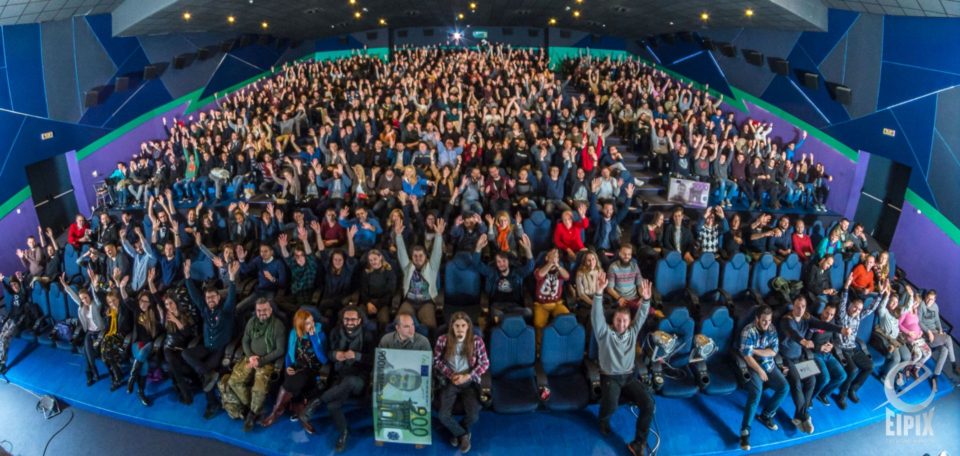

Choices Made
The first choice we had to make was the type of game we wanted to develop. We didn’t want to bite off more than we can chew and end up with a megalomaniacal project with no experience in promoting and selling it. We felt it best to try and dip our toes in the water first, just to see if the temperature is right.
Even though we were aware of the challenges that come with entering a saturated market, we chose to make a free-to-play game. From a development perspective, free-to-play games are typically small and simple (or so we thought), and they seemed like the perfect self-publishing initiation project.
To be perfectly honest, we did have a bit of practice with free-to-play, albeit with the safety net of a publisher. Free the Witch, a free-to-play match-3 game we developed for Big Fish Games, was a huge learning experience - perhaps even too huge. Spending more than two years in development and going through numerous iterations, Free the Witch was an exercise in patience and persistence.
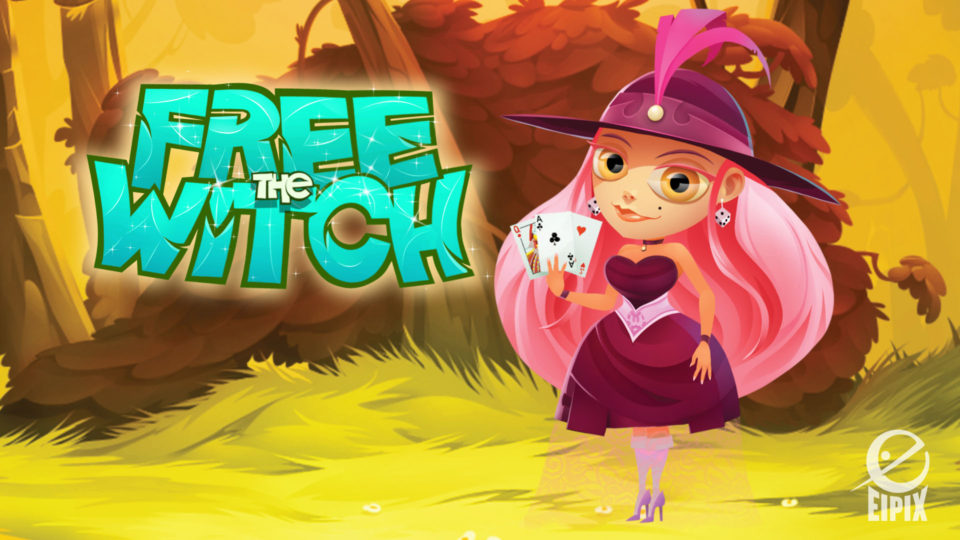
Still, working on Free the Witch provided us with many insights into the science and the analytics behind these games, all the information you must consider and how it affects the creative decisions and the mechanics of the game. We felt we were set in this department.
Independence Day
And then there was the self-publishing aspect.
With no experience in independent publishing, we knew there was a mountain of knowledge we needed to climb. It wasn’t going to be easy, but we were determined to give it a go. Ideally, the experience and the knowledge gathered through the development and the promotion of our first few games would set us up for future success. If nothing else, it would at least allow us to determine the extent of our abilities, and our limitations.
Obviously, we wanted to create a successful game, but we primarily wanted to learn and conquer the entire “backend” process, from the choice and the implementation of a monetization strategy, optimizing the game for multiple devices, the minutiae of placing your game on the app store, down to every other aspect we never needed to consider with our previous games. Finally, we wanted to learn how to promote and sell a game in a wildly competitive market. This game was to become Hoppy Land.
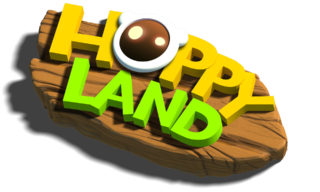
In the Beginning
Having never published a game on our own before, we felt it wise to try and emulate a pre-existing successful model. We chose to model our game - as loosely as it may be - after Crossy Road, the top ranking infinite hopper by Hipster Whale. Its popularity and simplicity made it a huge commercial success, and it was followed by many similar games.

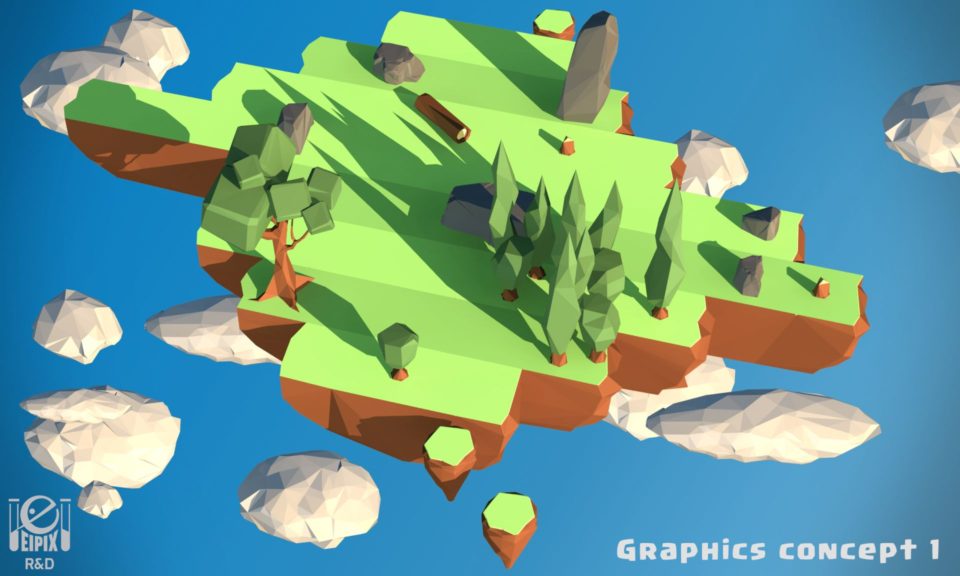
Our first decision was to set the game in a booby-trapped forest, and use only forest creatures for characters. At that point, the working title was Hoppy Forest. We tested out some basic concepts in the R&D phase, and we already set up simple 3D models, looking for an ideal solution to basic game design. We had to get some technical things just right – the sizes of characters and objects, light and camera positions, basic color palette, level of detail, and so on. We experimented with game elements throughout the entire development process, changing, simplifying, editing, scrapping…
We could have done this forever, but the precise, mathematical mind of our gameplay programmer, Dejan Milanović, kept us on course, steering us away from experiments that were a waste of time. Dejan understood that you had to make room for error, but not for randomness – everything was very specific and carefully planned and executed so that we could assess and calibrate it later.
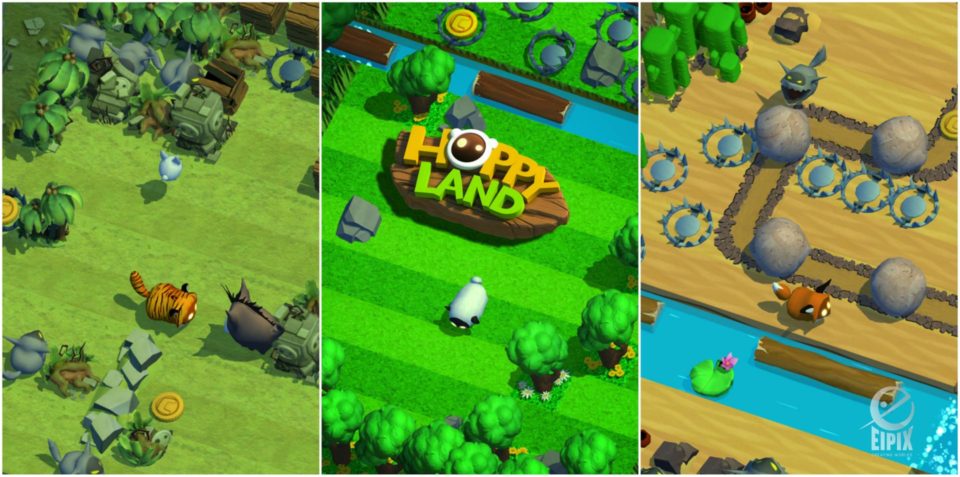
The Style Council
“Optimization was our spiritus movens during production. The final game art is simpler and lighter than its previous iterations – minimalism is your best friend when you optimize a game for mobile” says Boris Stajić, the 3D artist on Hoppy Land. “We chose stylized characters in order to keep the game clear and tidy. We knew we would have many characters visible and active at the same time, and anything non-essential to their design was written off as dead weight, including surface details to their textures”.
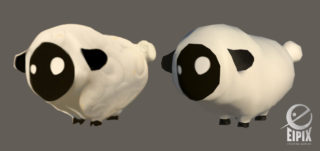
The enemy character design is similar to the player characters – simple textures. The difference is that we made them “edgier” – less smooth, with pointy details, such as eyes.
Passive elements, like the scenery, could get away with some more detailing. Similar arcade hopper games usually come with a pixel-like, low poly art style, and we wanted Hoppy Land to stand out with the richness of its visuals.

Once we started designing the scenery, we realized that we wanted more than just a forest. It was at this point that the name Hoppy Land came about. It was easier to create an “endless” game once we had more terrain types to play with. Since the game was designed for short, action-packed bursts of gameplay, it had to be fresh and exciting with each replay. The level designers were tasked with making the terrains as random as possible without jeopardizing our monetization strategy. This endless world was created from chunks of varying lengths, which could be attached and recycled. As the player entered one chunk of the game, the next one was automatically selected in front of him, starting with a selection of easier chunks and progressing to more difficult ones.
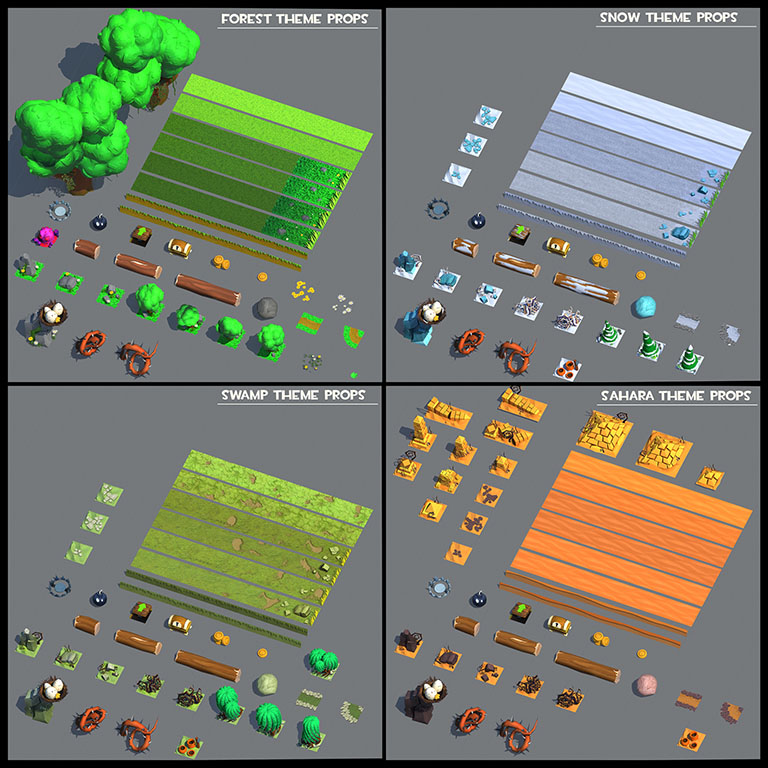
We had one problem to solve in gameplay – what if the player spent too much time in one spot, slowing down the desirable game speed? We added a mechanism that would kick the player out if they dawdled – the Chicken Death Machine. The CDM is actually the chicken that appears in the reward screen, but this time it drives a huge tank that sucks in lingering players. We added an easter egg to the tank – the chicken catches players in its CDM, and resells them in the Reward Screen later.

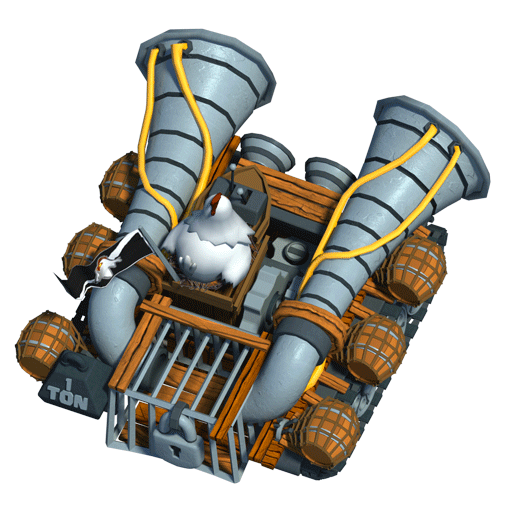
Free-to-play?
Implementing a realistic and functional monetization model into a game that is free is essential. It is also very tricky. On one hand, you obviously want your game to make money, but you also want it playable and enjoyable without any in-app purchases - otherwise why call it “free-to-play”.
Our producer Petar Milivojević had a solid grasp of game marketing, and he truly invested himself in following industry news, keeping up with how other developers were making their money, and doing his best to learn from them.
Ultimately, due to the endless, non-episodic nature of Hoppy Land, we settled for a “cosmetic” monetization model that allowed players to buy new terrains or character skins, but took nothing away from basic gameplay. The jury is still out on the success of this model, but if there’s any advice we can give on this subject, it’s this: think about the monetization as a game design element that you must consider from the very start, not as a feature you somehow squeeze into a fully developed game.
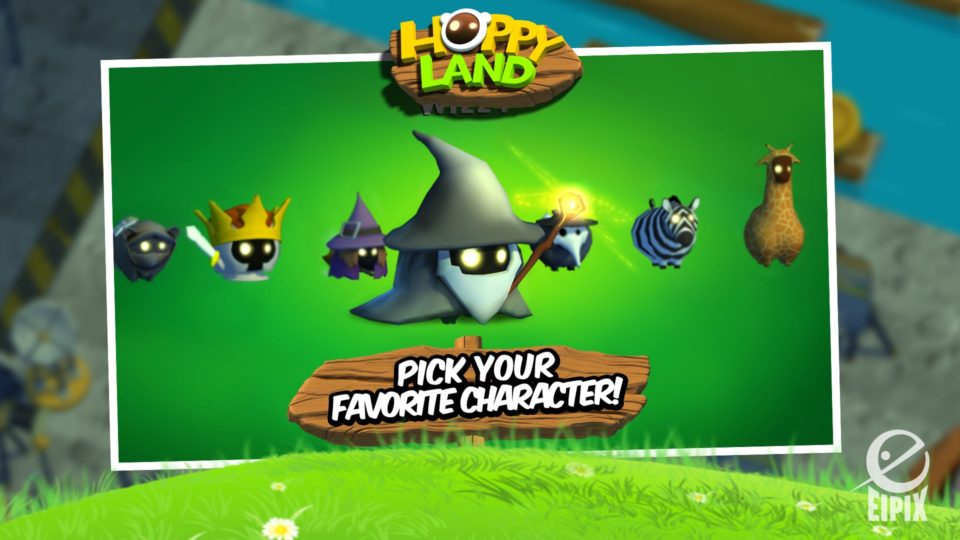
Optimization Will Be the Death of Us
Probably the main difference between game development for PC and for mobiles is the limited resources that come with mobile game development. It isn’t so easy to make a game beautiful AND functional when you have to optimize it for minimal configurations. There were technical difficulties – we couldn’t overdo the assets, and the code had to be squeaky clean. Most of the time we were simply balancing the two, trying not to go over the memory limit of weaker iOS devices.
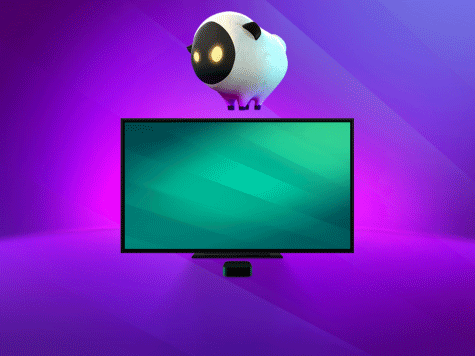
Many mobile games can go with light optimization because they use less demanding graphics – we didn’t have that luxury. In order for the game to run smoothly on even the weakest iOS devices, we were always looking for that extra byte to remove from the game. It was the only way to expand the gameplay with new content and not destroy weaker devices. We went through the whole process again when we were adapting the game for Apple TV, which has a characteristic interface and controller.

Testing, Testing, 1-2, 1-2
Before we got our hands dirty, we looked at similar games and the size of their development teams, and estimated that we’d complete Hoppy Land in a short period. We were wrong. We didn’t take our own lack of experience with the Unity game engine into account. Although most of the team had already worked with Unity before Hoppy Land, we weren’t finished exploring the boundaries of working with mobile devices until well into late production.
“The app testing process for different mobile devices can vary tremendously”, says Miloš Ristić, our gameplay programmer. “In the beginning, we usually worked with Android, but towards the end of the project, as it became clearer that the game will be released for iOS first, we mainly switched to iOS builds. At first, the build could last up to 45 minutes, which is a lot of time if you’re only testing how one parameter affects the game. Afterwards we learned what a dSYM was, that we didn’t need it to test, we turned off generated bitcode, etc, and shortened the build time to 15 minutes!”
It was also important to keep our testing devices at different iOS versions: in our case, 7, 8 and 9 were sufficient, and we added the 10 later on (this caused a wholly new batch of problems that didn’t show with earlier iOS types, but that’s a story worthy of a whole new article).
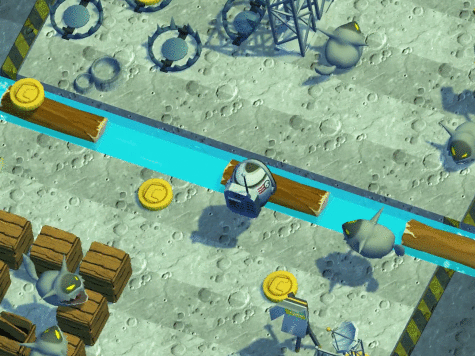
Marketing 101
We knew from the start that the odds of our first self-published game becoming a major hit (or even a moderate success) were stacked against us. Hey, even Rovio had a whole bunch of duds before nailing it with Angry Birds! After all, we were absolute beginners on a fiercely competitive market, with no experience, no reputation outside of a relatively confined HOPA community, no network of contacts in influential media – nada!
Still, we were determined to handle all the marketing in-house. We wanted to know the process inside and out, check off all the steps on the road map and learn what it takes to successfully market and sell the game.
We now know that it takes more than a fun game to make a hit. Hoppy Land was released on August 31, 2016, and some half a year later, it’s safe to say that it hasn’t exactly taken the world by storm. Still, the groundwork we laid for our future endeavors – working on our visibility, building and nurturing relationships, establishing a player base, ad providers, app store optimization and so on – all that knowledge accumulates and allows us to be more efficient and effective in the future. Not to mention all the scary acronyms we had to tackle in the process – you know, the DAUs, the MAUs, the ARPUs and the CPIs, KPIs, CPCs – we’re so familiar with them now that we are practically on first-name basis. Feel free to test us!
After the Fact
Despite all the difficulties, Hoppy Land was completed, and our team went through a crash course of free-to-play and self-publishing on a practical example.
”Looking back, we lacked information and experience with Unity game engine development of this sort”, says Dane Rukavina, the game designer. “I don’t think it would be realistic for any other team starting out with the same knowledge to make Hoppy Land in half the time. What I mean to say is that it was hard work, but we did good. People were learning so much, even about things that were outside their own expertise! I feel that, regardless of the stress, everyone honestly wanted to make a really cool game. And they did.”
“When I found myself testing the game more often than I really needed to, I realized that we had accomplished our goal. Here was a fun, simple game that players would come back to. Of course, beating the high score was important, but it is those close calls where you barely get out of a deadly situation, or you’re surrounded and get the enemies to attack each other, that take the cake. I had fun with these adrenalin rushes even as I was testing the incomplete game”, says Dejan Milanović.
All things considered, this endeavour took us back to our “junior developer” days. It wasn’t easy, and the rope that kept us all in line was the fact that we are all experienced, disciplined game developers, and know how to work as a team.
We are very proud of Hoppy Land! For all the struggles we had, its development reminded us of an important life lesson: even creative work can become a routine, and the amazing job of creating video games can feel like a regular 9 to 5. Challenges like Hoppy Land shake us out of our rut and throw us back in the saddle, reminding us of the thrill of creation. If you look past our underslept, stressed out demeanour, we actually feel rejuvenated, and our love for creating games has been rekindled. We are just at the start of our free-to-play journey.
Comments









